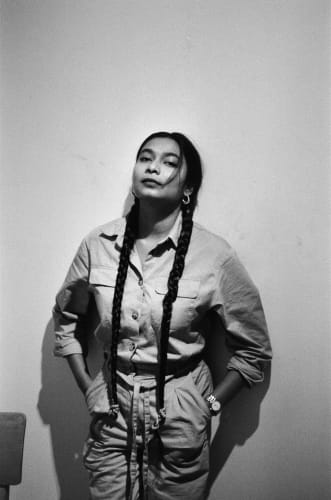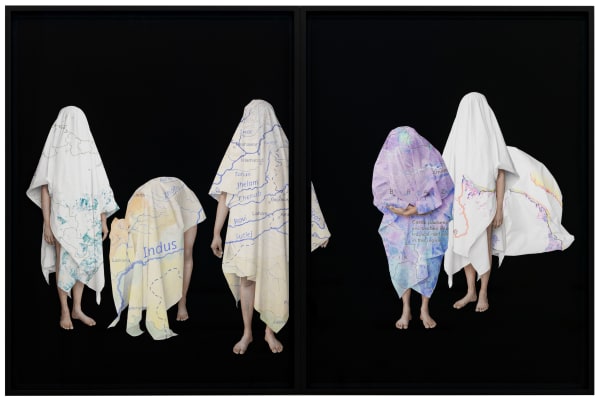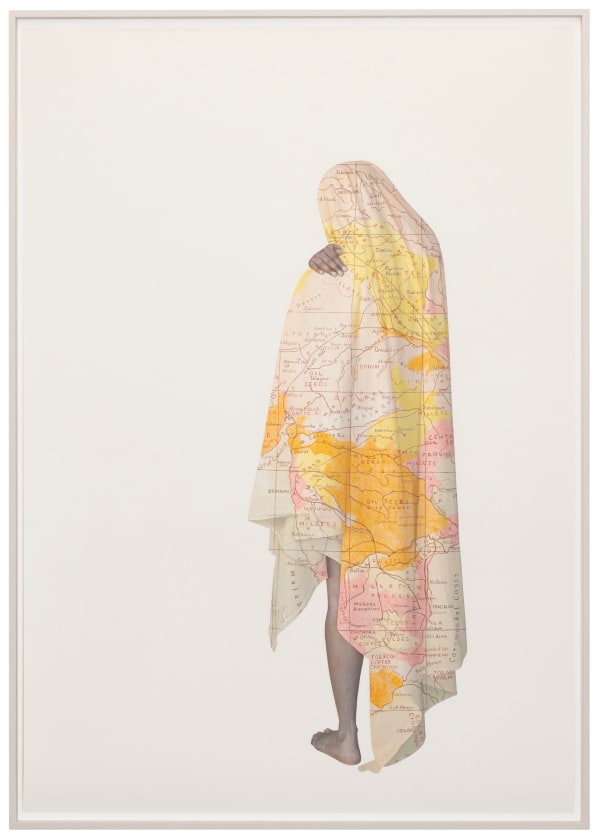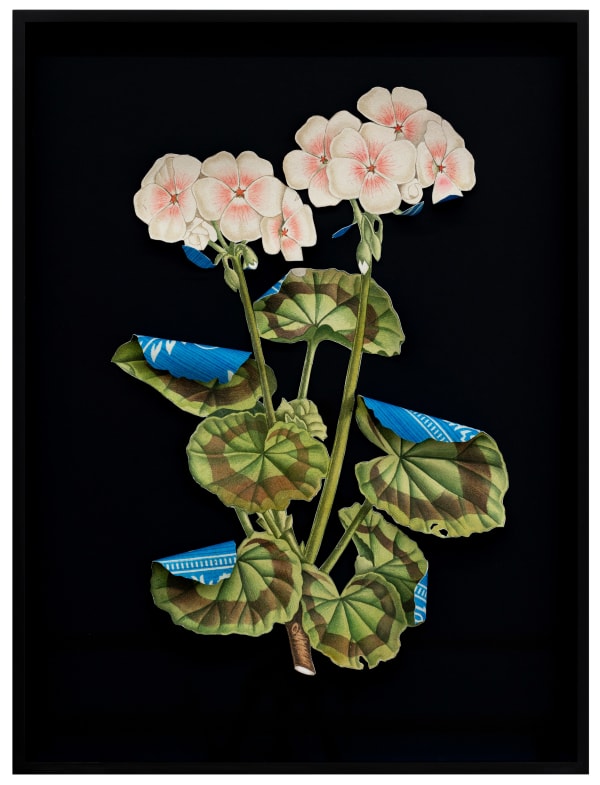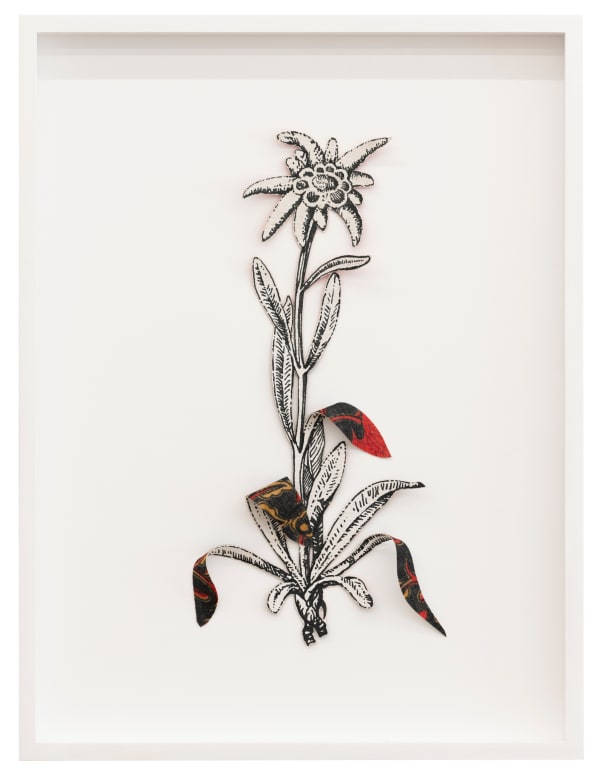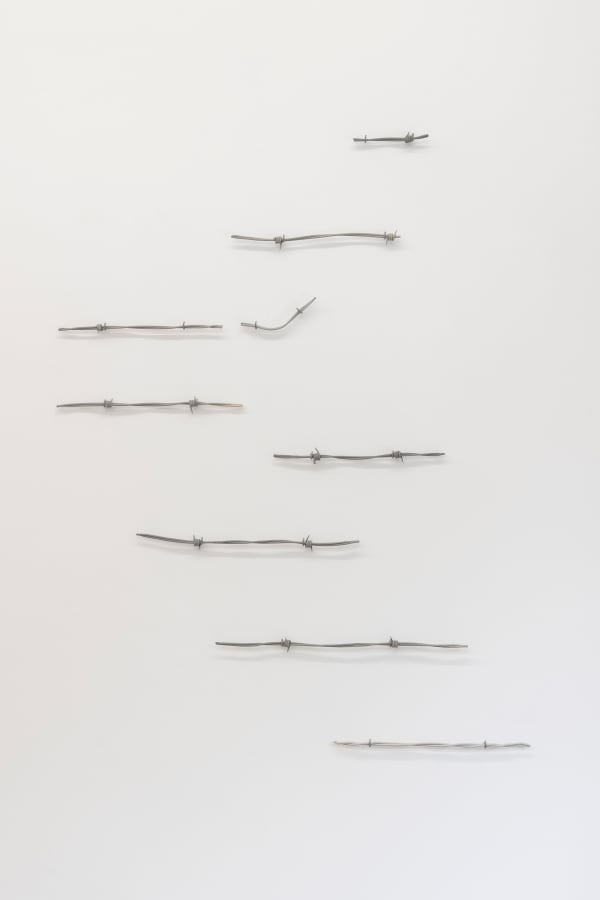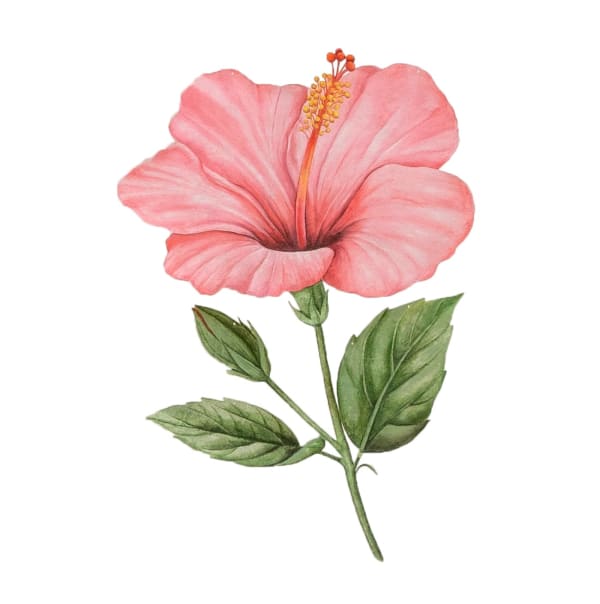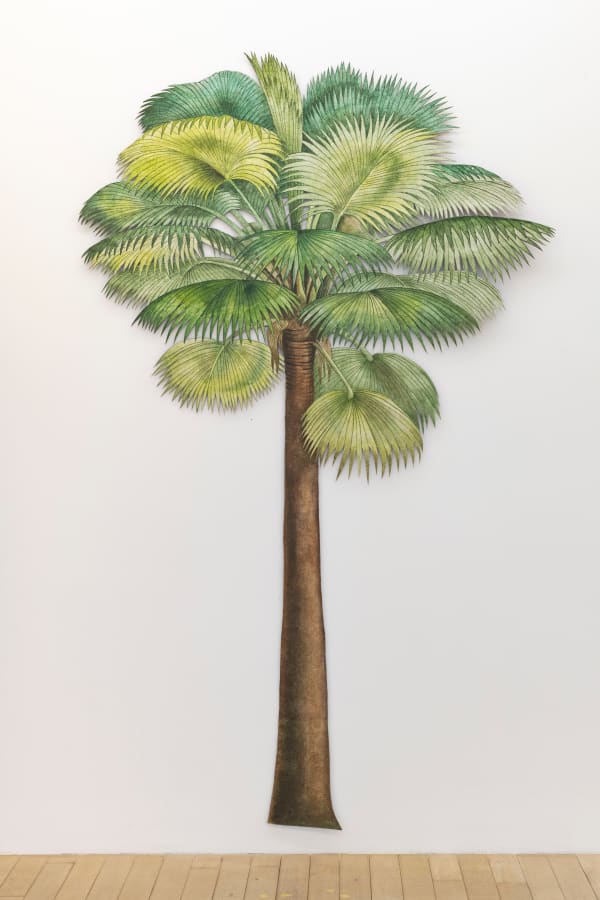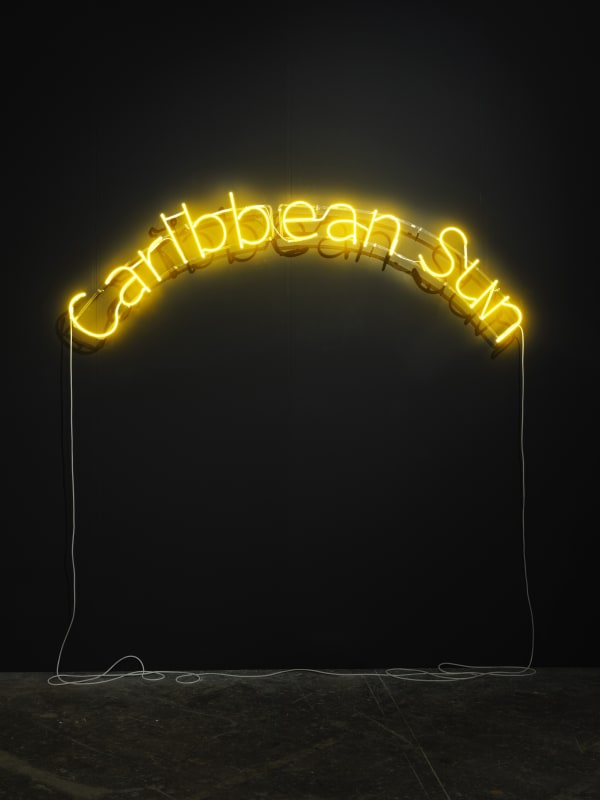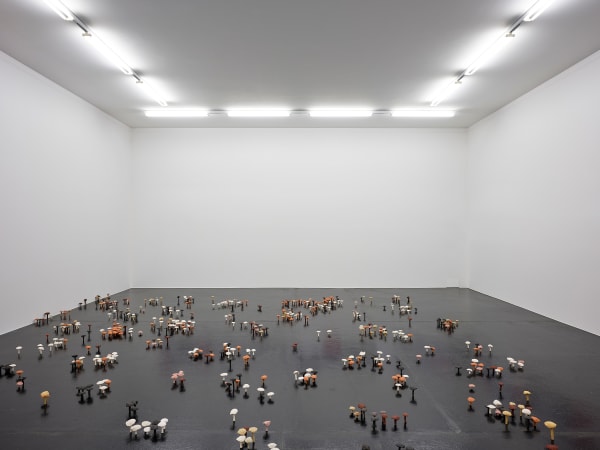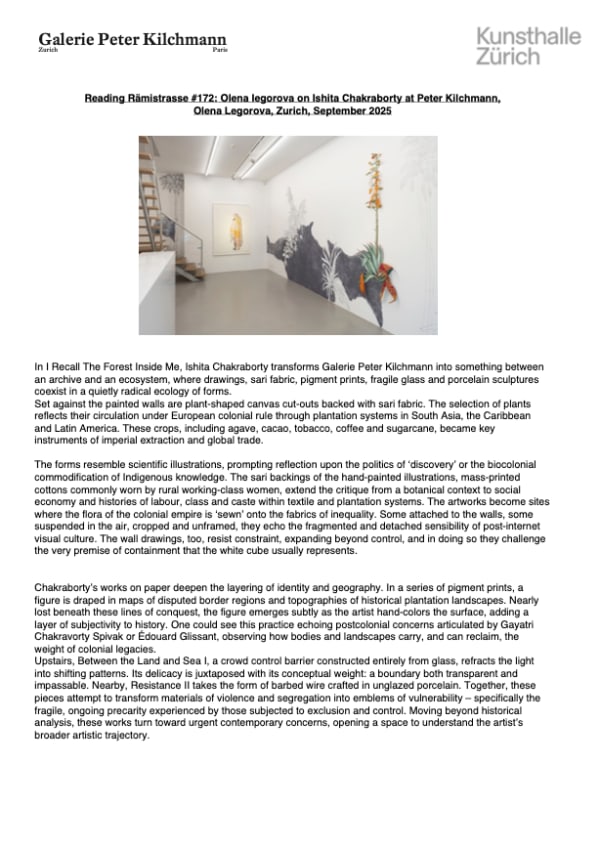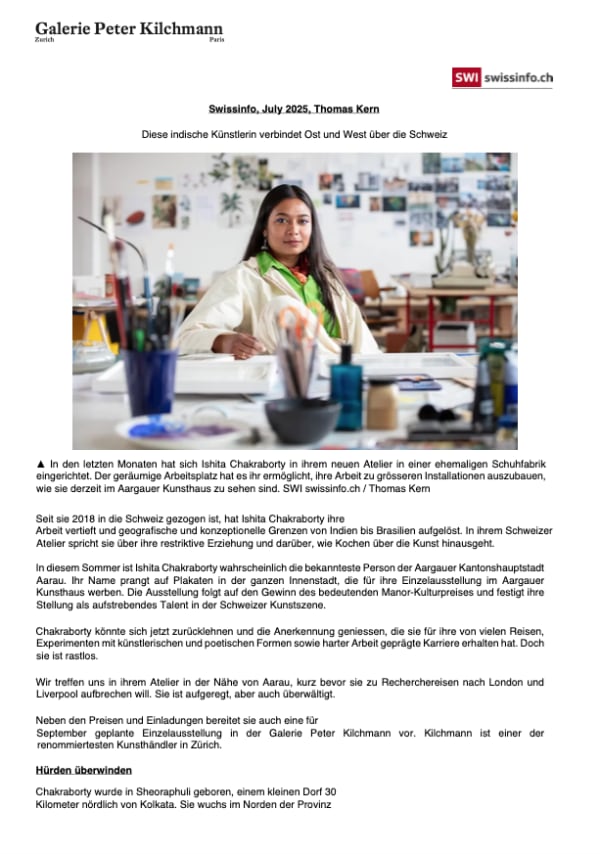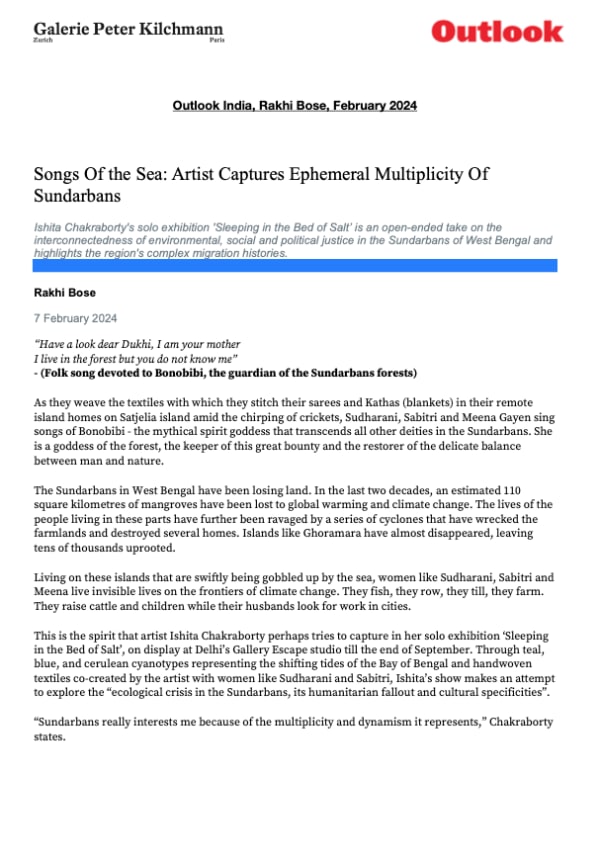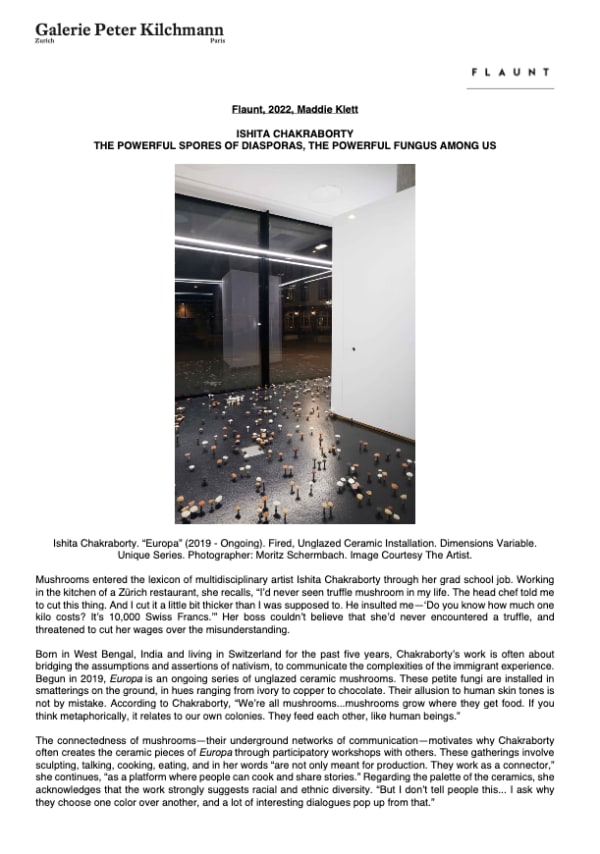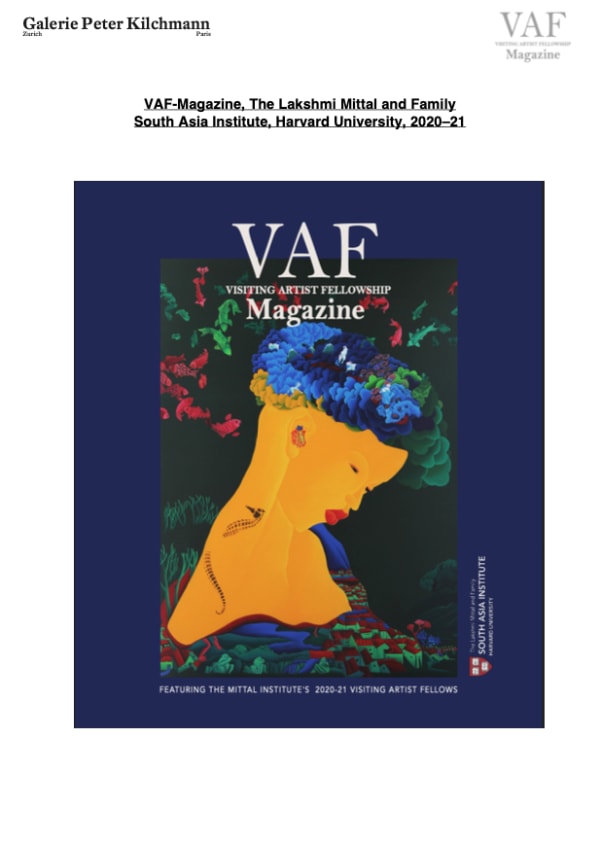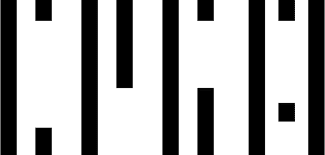Ishita Chakraborty’s multidisciplinary practice spans painting, drawing, installation, poetry, sound, and performance, unfolding as a complex web of voices, materials, and memories. Her works grapple with socio-political and geopolitical realities, probing themes of displacement, colonial traumas, identity, and language. At the core of her practice lies an engagement with subaltern narratives—stories of resistance, survival, and belonging that often remain unheard.
In recent years, Chakraborty’s inquiry has expanded toward the entanglement of existential and ecological questions. Her projects increasingly address climate migration, ecofeminism, and the shifting relations between the Global South and North in post-migrant societies. Seeking what she calls a “rhizomatic language”—a form of expression that binds old and new knowledge—she challenges dominant systems of ownership and gestures toward collective futures.
Land and landscape remain central to her practice, envisioned as paradoxical sites of beauty, vitality, exploitation, and displacement. Her works often layer imagery, archival materials, and textiles to create visual archives of entangled histories, where colonial economies and aesthetic appropriations intersect.
Through her materially diverse and conceptually rigorous works, Ishita Chakraborty unsettles linear narratives of history and belonging, reimagining spaces where resistance, memory, and ecology intersect. Her practice is at once poetic and political, fragile and unyielding.
She has received grants and residencies, including the Pro Helvetia Brazil Amazon Residency, São Paulo (2024); Manor Art Prize, Aarau (2024); Aargauer Kuratorium Art Grant, Aarau (2024); Hyundai Art Grant, New Delhi (2022); and Credit Suisse Art Grant, Zurich (2021), and was nominated for the Prix Mobiliar Art Genève, Geneva (2024).
-
 Between the Land and Sea I, 2025
Between the Land and Sea I, 2025 -
 I Recall The Forest Inside Me IV, 2025
I Recall The Forest Inside Me IV, 2025 -
 I Recall The Forest Inside Me I, 2025
I Recall The Forest Inside Me I, 2025 -
 Where The Wild Things Roam II, 2025
Where The Wild Things Roam II, 2025 -
 Where The Wild Things Roam III, 2025
Where The Wild Things Roam III, 2025 -
 Resistance X, 2025
Resistance X, 2025 -
 Where the Wild Things Roam XI, Cacau, 2025
Where the Wild Things Roam XI, Cacau, 2025 -
 In Passage Tropical, Hibiscus, 2025
In Passage Tropical, Hibiscus, 2025 -
 In Passage Tropical, Palm, 2025
In Passage Tropical, Palm, 2025 -
 Caribbean Sun, 2024
Caribbean Sun, 2024 -
 Mute Tongue (Who Am I? Without Exile?), 2021
Mute Tongue (Who Am I? Without Exile?), 2021 -
 Europa, 2019–ongoing
Europa, 2019–ongoing
-

Ishita Chakraborty
I Recall The Forest Inside Me Rämistrasse 33, Zurich 18 Sep - 8 Nov 2025Galerie Peter Kilchmann presents I Recall The Forest Inside Me , the first solo exhibition of Manor Art Prize 2024 winner Ishita Chakraborty. The show reflects on the artist’s personal...Read more -

Ishita Chakraborty
Manor Kunstpreis 2024
Aargauer Kunsthaus, Aarau, Switzerland
24 May - 24 Aug 2025Read more -

Ishita Chakraborty
La libertà è una lotta costante
Museo Vincenzo Vela, Ligornetto, Switzerland 23 Feb - 18 May 2025
Read more -

Ishita Chakraborty
Apropos HodlerKunsthaus Zurich, Zurich, Switzerland
8 Mar - 30 Jun 2024Read more -

Ishita Chakraborty
Seeds and SoulsKunsthal Charlottenborg, Copenhagen, Denmark
16 Sep 2023 - 18 Feb 2024Read more
